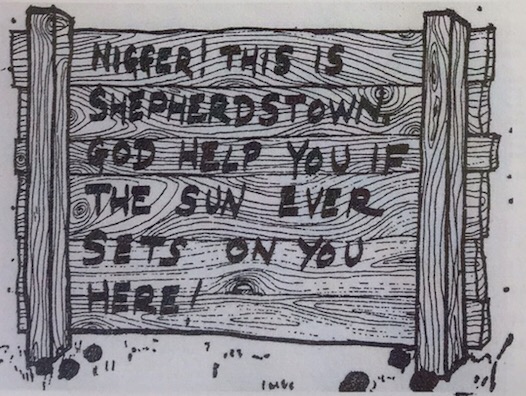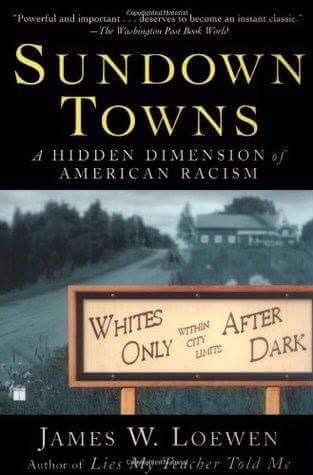History of Syracuse as a Sundown Town

An example of signs that would be placed at the town limits of Sundown Towns.
Any use of racial profanities or language of that sort in this article is used in quotations from articles on the subject and do NOT reflect the author’s opinion or the opinion of the Meigs Independent Press.
When I think of my hometown of Syracuse, many different things come to mind. I think back to my childhood and going across the street to Baer’s Market and getting candy or a milkshake after Helen opened her ice cream parlor. I think of Alberta Hubbard walking around the block and waving to my group of friends as we played wiffleball on the old Slack property in my grandparents’ backyard. There are tons of happy memories I could do articles on about Syracuse and my childhood. But Syracuse has a history that not many know about, nor care to remember. Syracuse, Ohio was once a “Sundown Town.”
A “Sundown Town” is a town that had an unwritten rule of law that no African Americans were permitted to be within city limits once the sun set. Sadly, “Sundown Towns” weren’t all that uncommon across the United States. “Sundown Towns” predominantly existed from the end of the Civil War (1865) until about 1968, although some sources say they continued well into the 1980s. Some could also argue that they still exist today.
I’ve heard stories from different people about signs at the corporation limits in Syracuse to the effect of “whites only within city limits after dark.” Some sources have said that there was an acronym below the signs that read “ANNA” which stood for “Ain’t No Niggers Allowed,” and others have said that a sign plainly said “Nigger, don’t let the sun set on you in Syracuse; if it does, you won’t see it rise.” Then I found it in the book Sundown Towns: A Hidden Dimension of American Racism on page 267. “In Syracuse, Ohio . . . no Negro is permitted to live, not even to stay overnight under any consideration. This is an absolute rule in this year 1905, and has existed for several generations.”
Page 67 states, “Intentionally all-white communities dot the rest of the Midwest. In Ohio, independent sundown towns are found from Niles in the north to Syracuse on the Ohio River, and sundown suburbs proliferate around Cincinnati and Cleveland.” The book continues on pages 236-237 telling that Syracuse did not even allow African Americans in town during the day. Further on in the book it looks at census records of these former sundown towns and ironically African American numbers are almost nonexistent to this day. The 2010 census in Syracuse shows African Americans made up 0.04% of the village’s population, up from 0.023% in the 2000 census.
An article in the December 7, 1905 edition of the Fairmont, West Virginia Free Press describes how children in Syracuse served as the town’s first line of defense against black people.
In Syracuse, Ohio, on the Ohio river, a town of about 2,000 inhabitants, no Negro is permitted to live, not even to stay overnight under any consideration. This is an absolute rule in this year 1905, and has existed for several generations. The enforcement of this unwritten law is in the hands of the boys from 8 to 20 years of age…
When a Negro is seen in town during the day he is generally told of these traditions… and is warned to leave before sundown. If he fails to take heed, he is surrounded at about the time darkness begins, and is addressed by the leader of the gang in about this language: “No nigger is allowed to stay in this town overnight. Get out of here now, and get out of here quick…”
If he hesitates, little stones begin to reach him from unseen quarters and soon persuade him to begin his [retreat]… So long as he keeps up a good gait, the crowd, which follows just at his heels, and which keeps growing until it sometimes numbers 75 to 100 boys, is good-natured and contents itself with yelling, laughing, and hurling gibes at its victim. But let him stop his “trot” for one moment, from any cause whatever, and the stones immediately take effect as their chief persuader.
As the old Ohio flows…












